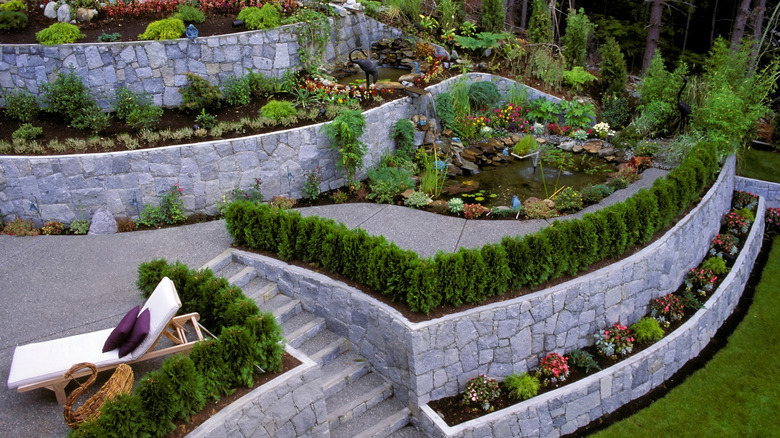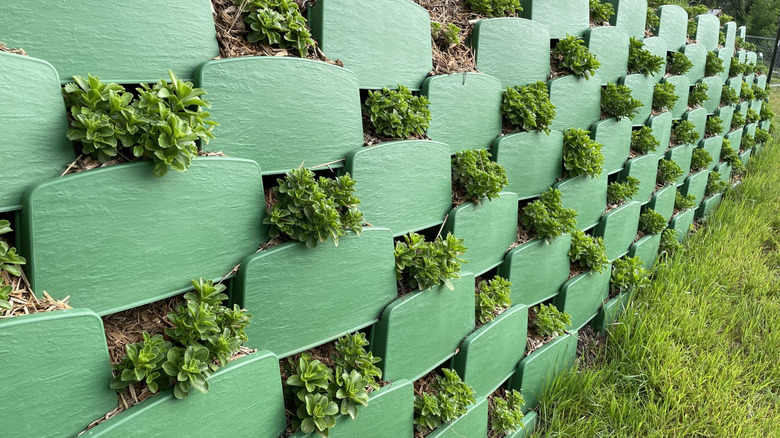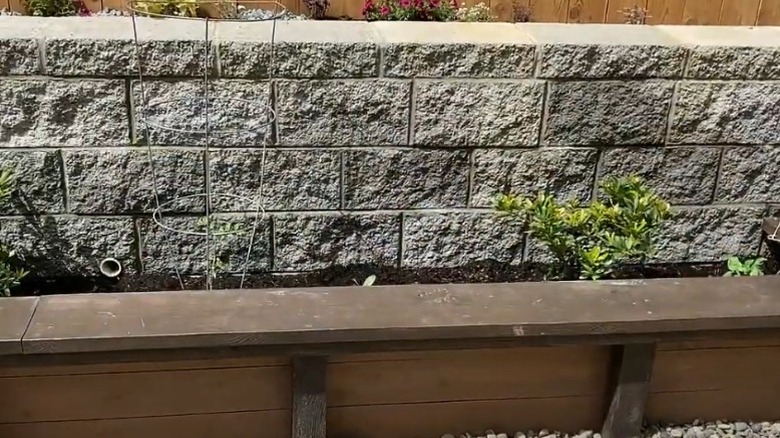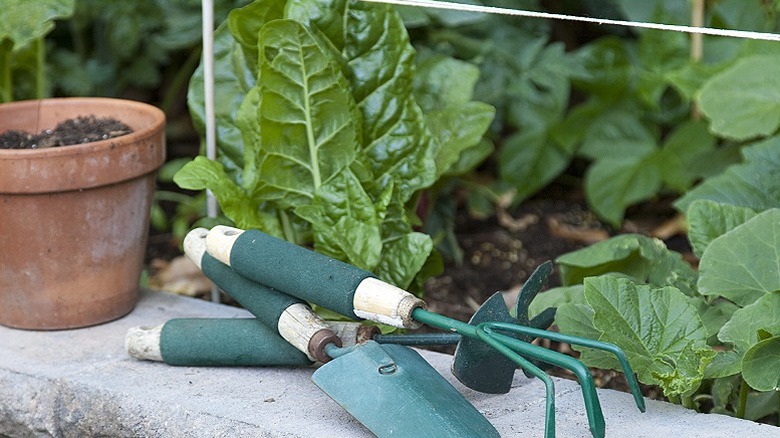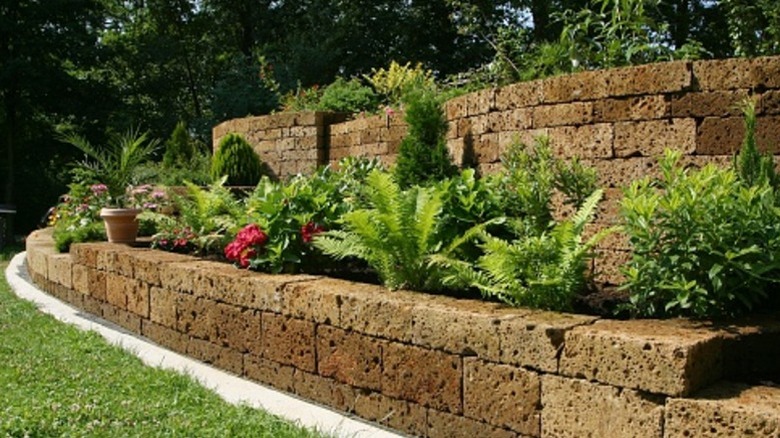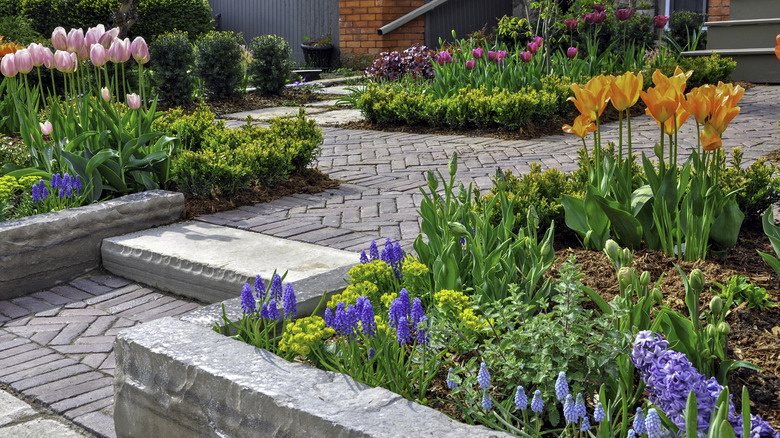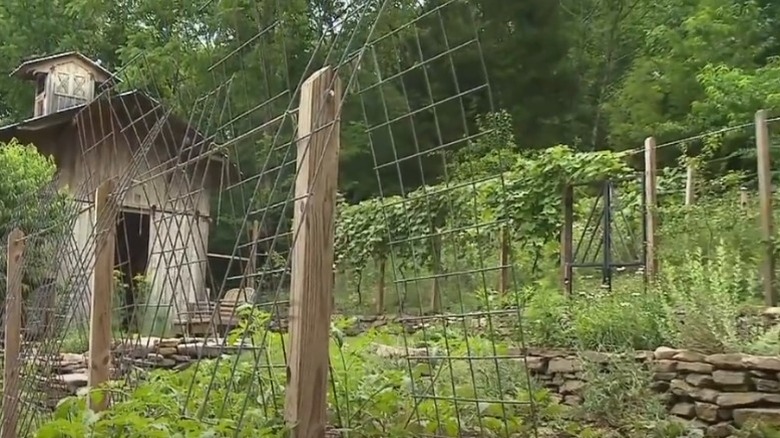7 Ideas To Turn Your Retaining Wall Into A Fabulous, Functional Vegetable Garden
As many gardeners strive to grow a greater proportion of their own edibles, available garden space can become more and more difficult to find. This is where you need to be a little creative and use the space you already have to grow all the different varieties that you want to cultivate. If you have an existing retaining wall, the hardscaping feature lends itself nicely to creating a flourishing vegetable garden in a small space.
Some of the greatest advantages of a retaining wall are that it will naturally create a raised garden bed, improve drainage, and make it so much easier to tend to your veggies. Plus, you can use the wall to allow vining plants like pumpkins or watermelons to cascade down the wall and then scramble along the ground at its foot. Similarly, you could use the wall as a support for climbing plants like beans by installing a trellis in front of it. Plus, if your retaining wall is made from large rocks and there are crevices, you can fill these with soil and plant shallow-rooted vegetables and herbs to use the vertical space to its full advantage.
Have a thorough look at these impressive ideas below, and you'll realize that vegetables can really be grown in almost any garden space. All they need is good soil, ample amounts of sunshine, and regular feeding and watering. However, if you need to build a wall to recreate any of the ideas in our lineup below, make sure that the retaining wall you're considering complies with local building codes and that you've pulled all necessary permits.
Grow greens in a block retaining wall
This tall block retaining wall would be ideal to grow a whole range of shallow-rooted greens, such as lettuce and spinach, in the spaces created within the hollow blocks. You could intersperse these with herbs and even add some flowers, such as marigolds and nasturtiums. At the top of the wall, you could plant a few vining crops, such as pumpkins, that could then trail down over the blocks. Securing the vines into the soil in the blocks will provide them with some added support.
Build a raised vegetable garden in front of the retaining wall
If you have a fairly tall brick or concrete block retaining wall, why not construct a raised vegetable bed in front of the wall? This solution would be great for growing sun-loving varieties, such as tomatoes and peppers, since the bricks would reflect the heat and provide your plants with the Mediterranean climate they love. The plants would also help soften the look of the wall and create a much more pleasing, natural aesthetic.
Turn a terraced slope into a thriving vegetable garden
This gentle sloping garden has been terraced using timber posts to create multiple levels of garden beds to control water run-off and soil erosion. This terraced retaining wall creates the ideal base for a thriving vegetable garden. If you have a similar setup that gets plenty of sunshine, you could use the space to grow a huge selection of different veggies. Ideally, you want to plant taller varieties at the back, next to the brick wall, and fill in the front sections with lower-growing veggies.
Grow vegetables in a garden bed behind the retaining wall
Having a garden bed behind a stone or brick retaining wall is ideal for growing a range of different vegetables. The cap on top of a retaining wall not only gives you a great spot to place your tools when you're tending your garden, but it also makes the perfect seat when it's time to do a little pruning, if you want to harvest some lovely fresh greens, or if you simply need a break. Covering the beds with mulch helps retain some of the soil moisture to help the veggies thrive.
A two-tier retaining wall provides the ideal structure for a vegetable garden
This two-tier retaining wall would make the perfect base for a productive vegetable garden. Ideally, you would plant some trailing varieties in the top tier so that they could cascade down the wall. Plant taller types at the back of the bottom tier and finish it off by adding some lovely soft herbs along the front edge. The taller wall at the back would also create good support for a trellis, and you might even want to have a go at espaliering a small fruit tree.
Grow vegetables next to flowers in your retaining wall garden beds
When space is at a premium, the lovely flowers beds behind retaining walls in your front yard could be used to grow vegetables. You don't even have to forego the flowers. Just dot a few different veggies around the other plants and you can have a bountiful harvest while still enjoying lots of pretty colors. This setup is advantageous for your vegetables because the flowers will attract useful pollinators (this is one of the many benefits of growing cosmos in your edible garden).
Use mesh panels and sturdy posts in your retaining wall garden
Although this stunning vegetable garden is on the larger side, you could easily incorporate some of these ideas into your own patch. The slope is carefully terraced using stone retaining walls, and at the edge of each tier, there are sturdy timber posts that have large mesh panels attached to them. These are ideal as trellises, but they also help define the garden bed areas and add a sense of order to the entire setup. Mesh cattle panels are one of the sturdiest materials for DIY trellises in your vegetable garden.
